BAILEY, Eric H
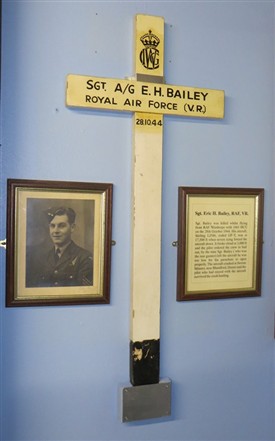
Wooden Commonwealth War Grave Commission grave marker - Sgt E H Bailey
Howard Heeley
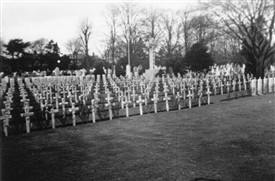
Wooden Commonwealth War Grave Commission grave markers at Newark Cemetery.
Newark Air Museum Archive
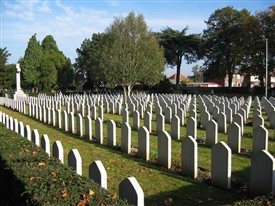
War grave section at Newark Cemetery.
Howard Heeley
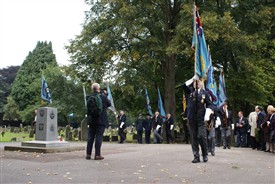
Airbridge Service at Newark Cemetery.
Howard Heeley
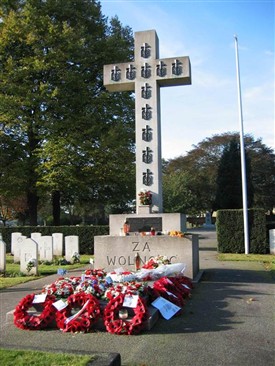
Memorial cross to the Polish airmen buried at Newark Cemetery.
Howard Heeley
A 1661 HCU trainee (Winthorpe)
By Howard Heeley
Just before Remembrance Day in 2014 staff and volunteers at Newark Air Museum prepared a temporary commemorative display to an air gunner who was killed 70 years ago while training at RAF Winthorpe (where the Newark Air Museum is now based).
This featured a wooden Commonwealth War Grave Commission grave marker that was recently donated to the museum by the family of Sgt Eric H Bailey, RAFVR. The grave marker has now been incorporated into the permanent display about RAF Winthorpe in Newark Air Museum’s small object display building. The accompanying text details how Sgt Bailey lost his life.
“Sgt. Bailey was killed flying from RAF Winthorpe on 28th October 1944. His aircraft, Stirling LJ586, GP-X, was at 17,500ft when severe icing forced the aircraft down. It broke cloud at 3,000ft and the pilot ordered the crew to bail out; by the time Sgt, Bailey (who was rear gunner) left the aircraft he was too low for his parachute to open properly. The aircraft crashed at Iwerne Minster, Blandford, Dorset and the pilot who had stayed with the aircraft survived the crash landing.”
This new display is one of several updates that are being made at the museum during the quieter winter opening season.
During the preparation for this display a photograph was found in the museum archive that shows the war grave section of Newark Cemetery, when it also had hundreds of these wooden Commonwealth War Grave Commission grave markers in situ. This photograph is included in this submission.
To the right of the photograph the first of the stone grave markers can be seen. A more up to date photograph shows an up to date view of the war grave section.
Newark and indeed Nottinghamshire’s strong links with the Royal Air Force and the Polish Air Force is reflected in the war graves section that was established in the town’s cemetery during World War II. Here around 90 Commonwealth and nearly 400 Polish burials were made. Amongst these are the graves relating to several air crashes and memorials in the county, including those at Gonalston and Staunton-in-the-Vale. Amongst the burials in the wider cemetery site are nearly 50 World War I graves.
In 1941 a memorial cross to the Polish airmen buried here was erected in the plot. This was unveiled by ex-President of the Polish Republic President Raczkiewicz (head of the war time Polish Government in London) and General Sikorski, Commander-in-Chief of the Polish Forces (war time Polish Prime Minister).
When both men subsequently died, they were buried at the foot of the Polish Memorial. General Sikorski's remains were returned to Krakow, Poland in 1993, but there is still a memorial to him at Newark.
Thanks to the fund raising efforts of the Air Bridge Association in 1989 the ‘Air Bridge Memorial’ was unveiled in the cemetery. This was in tribute to 250 Airmen of Britain, the Commonwealth and Poland who gave their lives dropping supplies to the Polish Home Army during the 1944 Warsaw Uprising. Between 4th August and 21st September 1944 over 200 flights were made from airfields in Italy over Yugoslavia, Hungary & the Carpathians to Poland. An annual memorial service is held to commemorate the Air Bridge at the end of September.